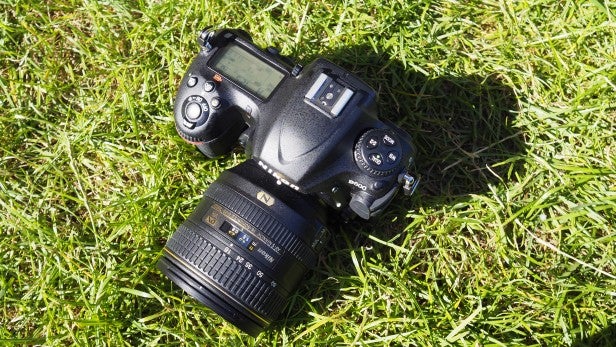Nikon D500 Review - Performance, Image Quality and Verdict Review
Performance, Image Quality and Verdict
An expensive but brilliant DSLR

Sections
- Page 1 Nikon D500 Review
- Page 2 Performance, Image Quality and Verdict Review
Nikon D500 – Performance and AF
The D500 has 153 AF points, 99 of which are cross-type for greater sensitivity. Fifteen of the points are sensitive at f/8, which is great news for anybody who’s using an extender or a long lens when photographing wildlife. Additionally all of the focus points are sensitive down to -3EV, aside from the central sensor which is sensitive down to -4EV, making it great for low-light focusing.
In practice, that translates into excellently swift focusing speeds – with it only being in very, very dark conditions that the camera struggles to lock on at all. Continuous focus is fantastic at keeping the subject in focus under the active AF point, so it appeals to sports and wildlife photographers for that reason – or even for those who just want to photograph an erratically moving child or dog.
Processing is also impressively swift. There’s a good shot-to-shot time and start-up is pretty much instantaneous. Even if you shoot in RAW format, the buffer for continuous shooting is deep and refreshes quickly, which is another bonus for sports and wildlife photographers.
Related: Best cameras 2016
Nikon D500 – Image Quality
The D500 performs well in a wide range of different shooting conditions to produce excellent images. It’s a fantastic all-rounder that an enthusiast who’s not tied to one particular subject type should enjoy using.
JPEG images directly from the camera display a good level of vibrance while still maintaining realism. Detail is also well reproduced by the sensor, with a great level of fine detail observable throughout the frame if you keep the sensitivity low.
It also performs well at higher ISO settings. It’s possible to see some degree of image smoothing in images taken at high settings of ISO 12,800-51,200, but only if you examine at 100%. At normal printing and viewing sizes of A4 or below, the impression of detail is fantastic up to these higher ISOs.
At the top setting of over 1,000,000, images aren’t really usable unless you’re working in the surveillance industry. The maximum you’re going to realistically get away with is around ISO 102,400 if you’re happy to share or print at small sizes.
It appears as if that there’s quite a bit of noise reduction applied to JPEG images – something I could see when looking at a corresponding RAW file. However, the noise reduction is well controlled and leaves you with a natural look. You can edit the RAW files already in Photoshop if you want to bring back any lost detail, depending on the subject type.
On most occasions, all-purpose metering performs well to deliver accurate exposures, with barely any need for exposure compensation to be altered. Similarly, automatic white balance also does well to produce accurate colours, giving you the choice of three different white balance settings, depending on your personal preference.
You can see sample images below:




Nikon D500 – Video
4K is the buzzword of the moment, and unlike the D5, the D500 was never restricted to only shooting three minutes of 4K video at a time.
Video quality is excellent, and this could also be considered a good camera for videographers who like to use DSLRs to create their movies.
Other video specifications which should appeal include a microphone and a headphone socket, plus the ability to simultaneously record to the SD or XQD card, as well as an external device.
Related: Sony RX10 III review
Should you buy the Nikon D500?
Nikon took its time to create the D500, but it’s certainly delivered, producing one of the best APS-C DSLRs yet. It has a range of fantastic functions and performs well in lots of different shooting scenarios, making it the perfect all-rounder for most enthusiasts.
Professional photographers who primarily shoot sports and wildlife could also be tempted towards this camera, considering the benefit that shooting with a crop sensor has for longer lenses. The resulting images can also be considered good enough for professional usage, too.
This is a chunky camera which feels great to use, with plenty of dials and buttons to keep enthusiasts happy. It also competes very well with Canon’s equivalent, the 7D Mark II. While it’s true that, if you’re already at this stage of camera purchasing, you’re likely to have lenses for one system or another, there’s enough here with the D500 to make you consider jumping ship.
That said, the D500 is, for the moment at least, quite a large investment – you won’t get much change from £2,700 if you buy it with the excellent 16-80mm lens. If you’re on a budget, Canon is the cheaper option in the short term, not withstanding the cost of having to replace any lenses you may have if you’re an existing Nikon user.
Verdict
There’s a huge amount to love about the Nikon D500. Those who’ve been waiting so long for a D300S replacement should be thrilled by the fantastic camera Nikon has produced.
Trusted Score
Score in detail
-
Value 9
-
Features 9
-
Image Quality 9
-
Build Quality 10
-
Performance 10

